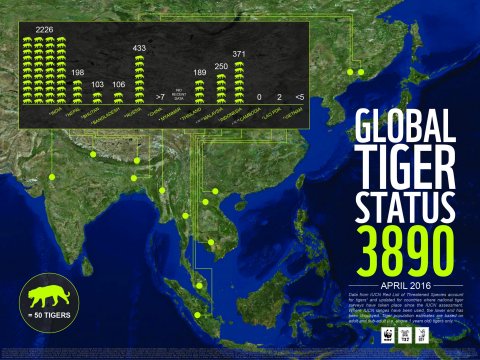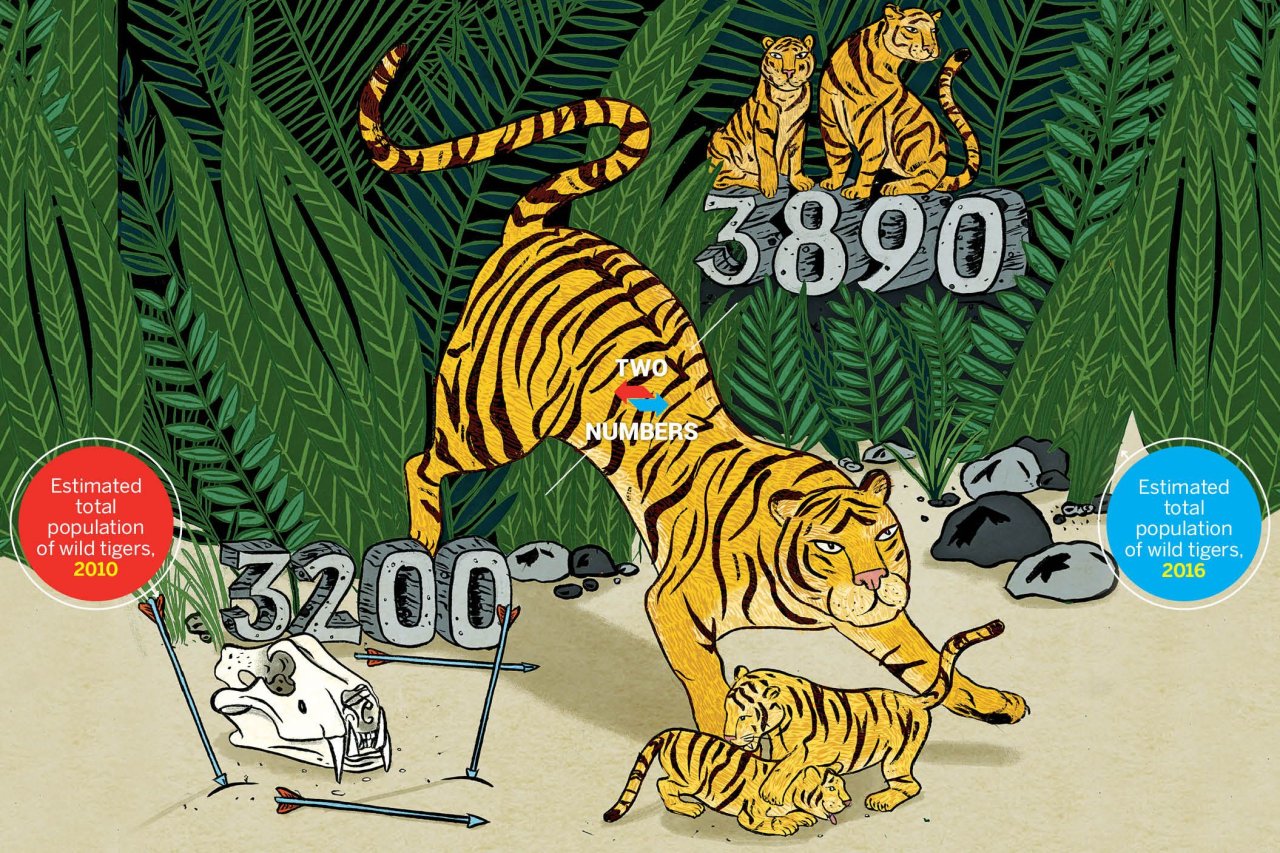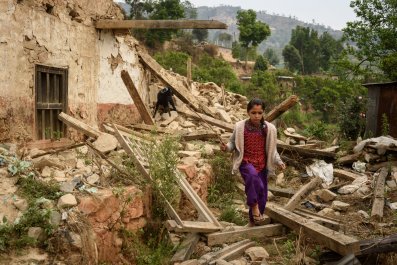There is finally some positive news for tigers: After declining—often precipitously—for a century, global populations of this endangered animal have risen slightly over the past six years.
In 2010, there were an estimated 3,200 tigers living in the wild. New estimates suggest that there are now just under 3,900.
Then, as now, tigers are primarily killed by poachers, who seek the animal for its skins, as well as body parts used in traditional Chinese medicine, despite zero evidence of medicinal value. Habitat loss and fragmentation continue to take a toll, as well as conflict with people, such as when tigers are killed after run-ins with locals and their livestock.

The increase in tiger numbers has primarily been seen in India, Russia, Nepal and Bhutan, says Ginette Hemley, a senior vice president with the World Wildlife Fund. The group has collated and released the population estimates on the eve of the third Asian Ministerial Conference on Tiger Conservation, in New Delhi, India, a meeting of 13 countries that have tigers living within their borders.
"We've got a good, positive start, [especially] since before 2010 things were in dramatic decline," says Barney Long, director of species conservation with the environmental group Global Wildlife Conservation. In 1900, for example, there were an estimated 100,000 tigers roaming the wilds of Asia, a number that declined by 97 percent by 2010. The reversal of the decline "needs to be heartily congratulated, but we can't be complacent."
In 2010, tiger-range countries met and set a goal of doubling tiger populations to a total of more than 6000 by 2022, the second Year of the Tiger (in the Chinese calendar). A study published April 1 in the journal Science Advances found that there are still enough intact forests to support a doubling of the tiger population, but only if these areas are kept protected.
"We have a long ways to go, but we are hopeful we have a chance to reach our goal," Hemley says.
The increase has been driven by political commitments of host-range countries, especially the aforementioned central and south Asian countries, Hemley says. But much work still needs to be done in Southeast Asian countries, including Malaysia and Indonesia. In some of these places, comprehensive estimates haven't been undertaken, and there haven't been major commitments in all tiger countries to protect the animals.
Cambodia likely has no tigers left in the wild, but luckily the government has acknowledged this and announced in early April its intent to eventually reintroduced tigers into the country, Long says.
One thing tigers have going for them is they can rebound quickly if left alone. This has been the case in Nepal, where their numbers have increased by 63 percent since the previous survey five years earlier, Hemley says.

Poaching remains an "ever-present threat," Long says, and will exist as long as there remains demand for tiger products in countries such as China. It will require continued effort to fight back against it, and much work remains to be done if populations of the animal are to continue to increase globally, he says.
"I am so proud that our collective efforts have begun to make progress toward our goal, but there is still so much to be done," said WWF board member Leonardo DiCaprio, who also runs a foundation involved in tiger conservation, in a statement.
India has by far the most tigers, with an estimated total population of 2,226, followed by Russia (433), Indonesia (371), Malaysia (250), Nepal (198), Thailand (189), Bangladesh (106) and Bhutan (103).



















